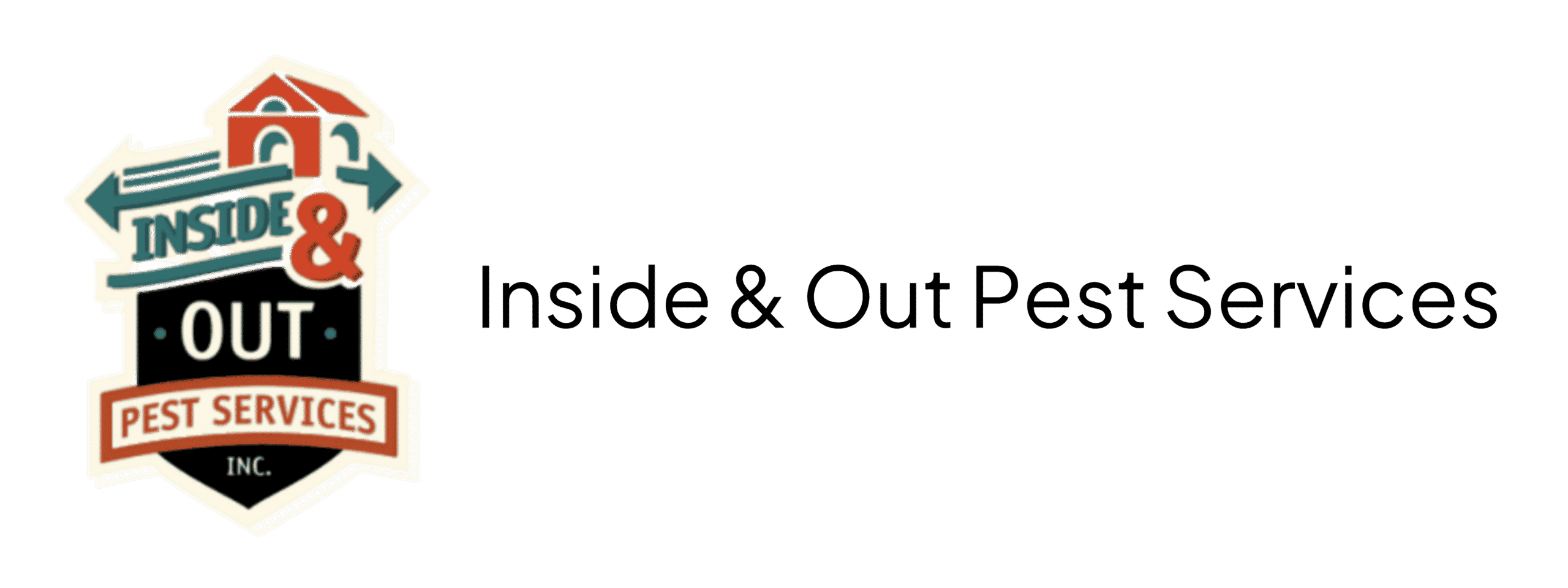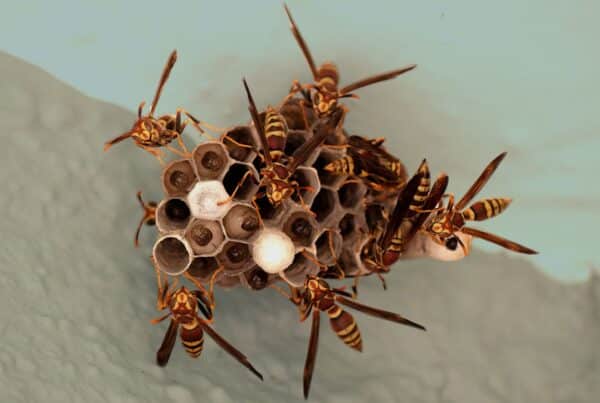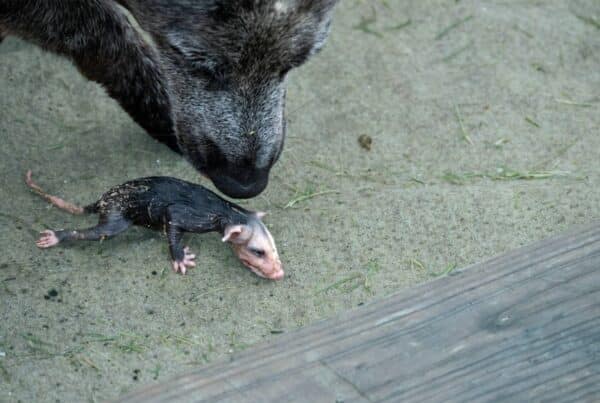Noticing tiny black bugs crawling around your Florida house? You’re not alone—one or two bugs might not seem like a big deal, but the type of bug matters. Some multiply quickly, damage fabrics, or contaminate food.
In the sections below, we’ll help you identify eight common tiny black bugs found in Florida homes, where they tend to hide, and what you can do about them.
Common Household Bugs vs. Infestations
Not every bug that makes its way inside is a sign of an infestation. Florida’s warm, humid climate makes homes especially inviting to certain insects. Bugs often enter through cracks, drains, or gaps around windows and doors. Others hitch a ride on plants, groceries, or secondhand furniture.
A tiny black bug here and there might not be a big deal, but if they’re a particular type, they keep coming back or you see them in large numbers, it could mean they’ve found a steady food source, moisture, or a hidden nest.
As you’ll find out shortly, most of the creepy crawlers described as “tiny black bugs” aren’t really black when you take a closer look, but can appear that way from a distance.
Identifying them correctly is the first step in deciding whether simple prevention will work or if it’s time to book professional pest control.
8 Tiny Black Bugs You Might Find In the House
Below are eight common tiny black bugs that Florida homeowners may come across, along with how to recognize them and whether they pose a problem.
1. Ghost Ants
Ghost ants are one of the most common tiny black bugs found in Florida homes. They can be easy to miss until they show up in large numbers.
These ants are drawn to sugary and greasy foods, often invading kitchens and bathrooms in search of moisture and crumbs. They don’t bite, but they spread quickly and are notoriously difficult to eliminate without professional treatment.
- Where You’ll Find Them: Kitchen counters, sinks, pantries, and baseboards
- Should You Be Concerned? Yes—ghost ants can be tough to control, and DIY solutions rarely work long-term.
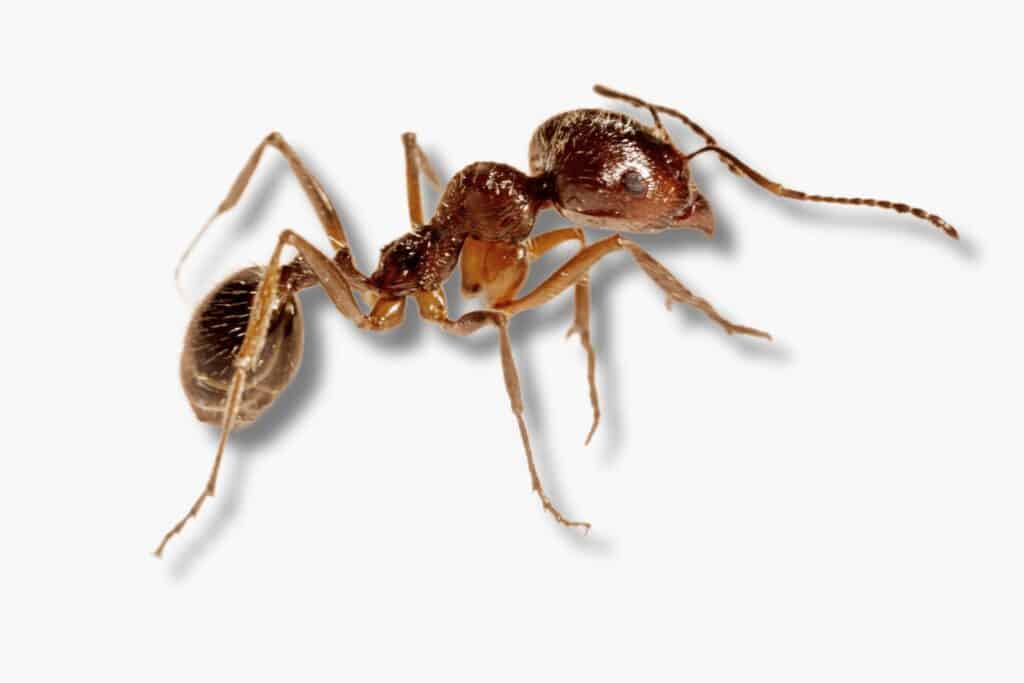
2. Carpet Beetles
Carpet beetles are small, round bugs with dark-colored bodies that can sometimes have speckled patterns. While the adult beetles themselves aren’t harmful, their larvae can be destructive.
They feed on natural fibers like wool, cotton, and silk, as well as upholstery and stored clothing. If left unchecked, carpet beetles can ruin fabrics and even shed skins that trigger allergies.
- Where You’ll Find Them: Window sills, closets, carpets, and upholstered furniture
- Should You Be Concerned? Yes—if larvae are present, they can damage fabrics and stored items.

3. Drain Flies
Drain flies, also called sewer flies or moth flies, are tiny, fuzzy insects that gather around sinks, tubs, and drains. They don’t bite, but their presence means organic matter is building up in pipes, creating a breeding ground for bacteria. If you see drain flies regularly, it’s a sign that your plumbing needs cleaning.
- Where You’ll Find Them: Kitchen and bathroom sinks, shower drains, floor drains
- Should You Be Concerned? Yes—while they aren’t harmful, their presence often means a plumbing issue that should be addressed.
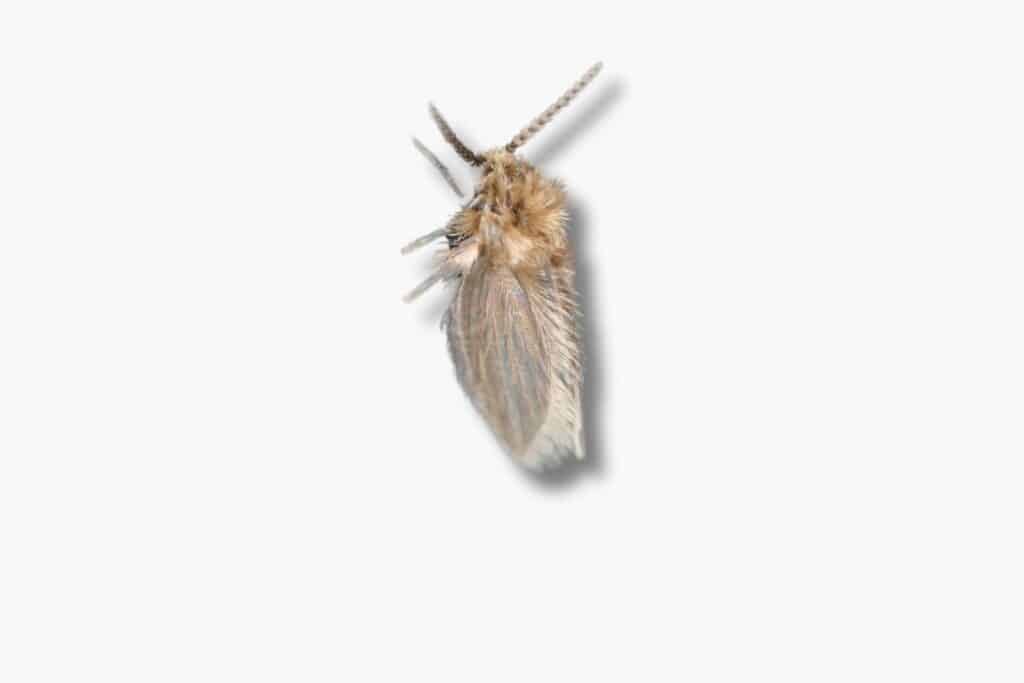
4. Fungus Gnats
Fungus gnats are small, dark flies that resemble fruit flies but are more attracted to moisture and decaying organic matter. They often appear around overwatered houseplants, where they lay eggs in the damp soil. While they don’t bite or cause damage to homes, their larvae can harm plant roots.
- Where You’ll Find Them: Indoor potted plants, damp soil, areas with excess moisture
- Should You Be Concerned? Yes—while they don’t bite, they can damage plants and multiply quickly if moisture levels aren’t controlled.
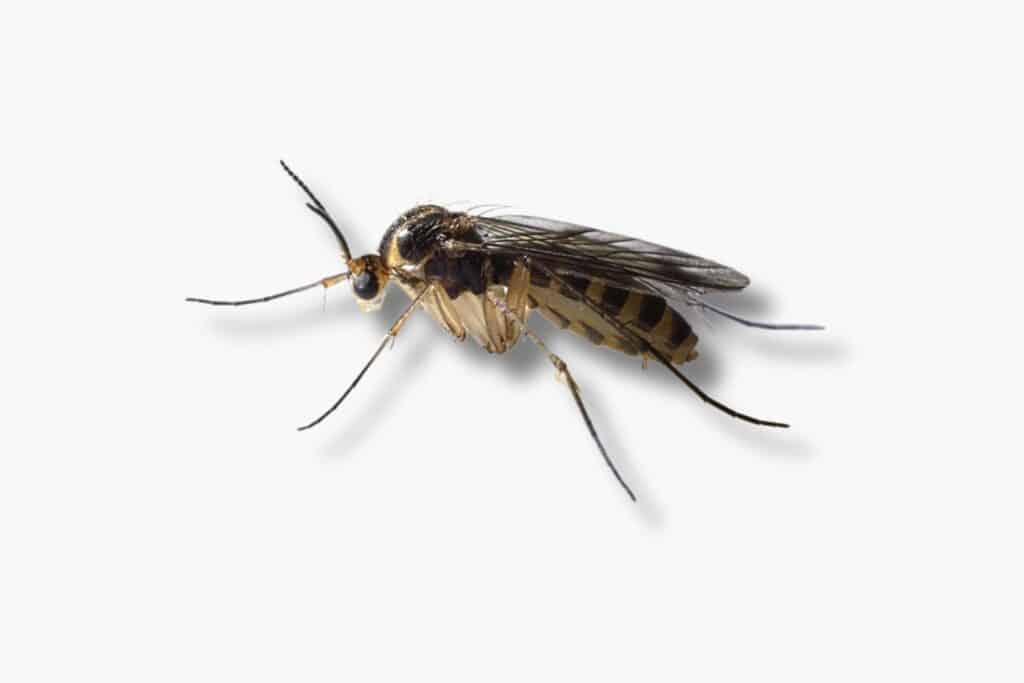
5. American Cockroach Nymphs
American cockroach nymphs are the smaller, darker versions of full-grown roaches. They start out tiny but grow into one of Florida’s largest and most persistent pests. Seeing nymphs indoors is a warning sign of a larger cockroach problem, as they often indicate an active breeding site nearby. Since cockroaches can carry bacteria and trigger allergies, they should never be ignored.
- Where You’ll Find Them: Kitchens, under sinks, behind appliances, and near drains
- Should You Be Concerned? Yes—spotting cockroach nymphs indoors means an infestation is developing.

6. Weevils
Weevils are tiny black beetles that infest dry pantry goods like flour, rice, and cereal. Unlike other pantry pests, weevils don’t just feed on stored food—they actually lay their eggs inside grains. Once hatched, the larvae continue eating until the food source is completely contaminated. If you find weevils in your pantry, it’s best to discard any infested food immediately.
- Where You’ll Find Them: Pantries, dry goods, flour, rice, and cereal boxes
- Should You Be Concerned? Yes—once they infest a food supply, they can spread quickly.
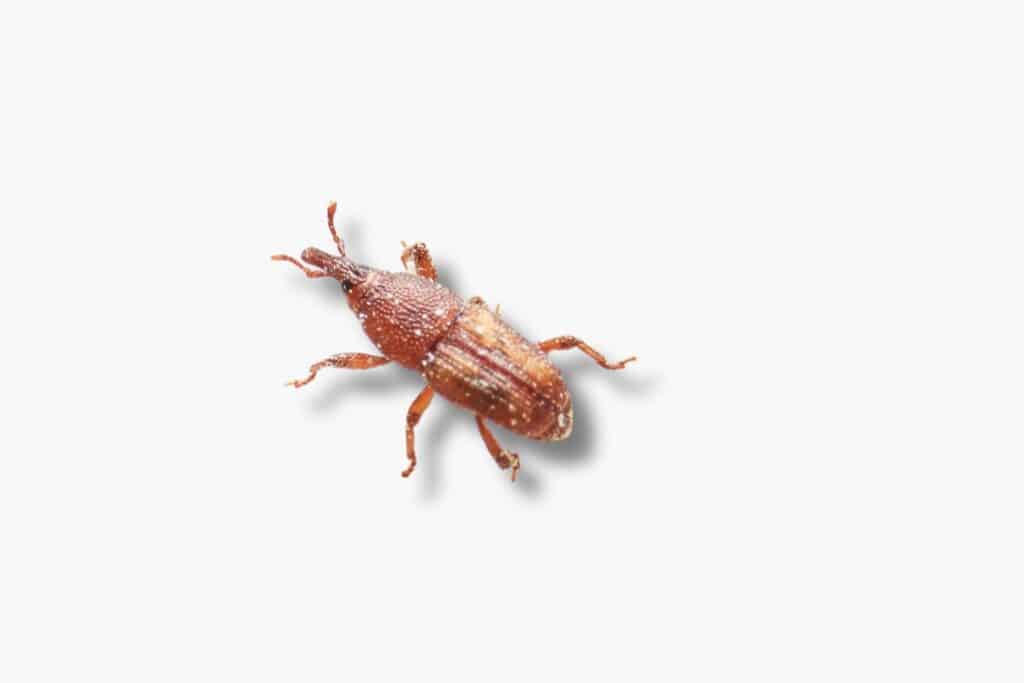
7. Clover Mites
Clover mites are tiny, reddish-black bugs that can appear in large numbers around windows and walls in the house. They don’t bite or cause structural damage, but they can leave behind red stains if crushed. They typically invade homes during seasonal changes, especially in the fall and spring.
- Where You’ll Find Them: Window sills, walls, baseboards, and around exterior doors
- Should You Be Concerned? No—they’re a nuisance but don’t pose a real threat.
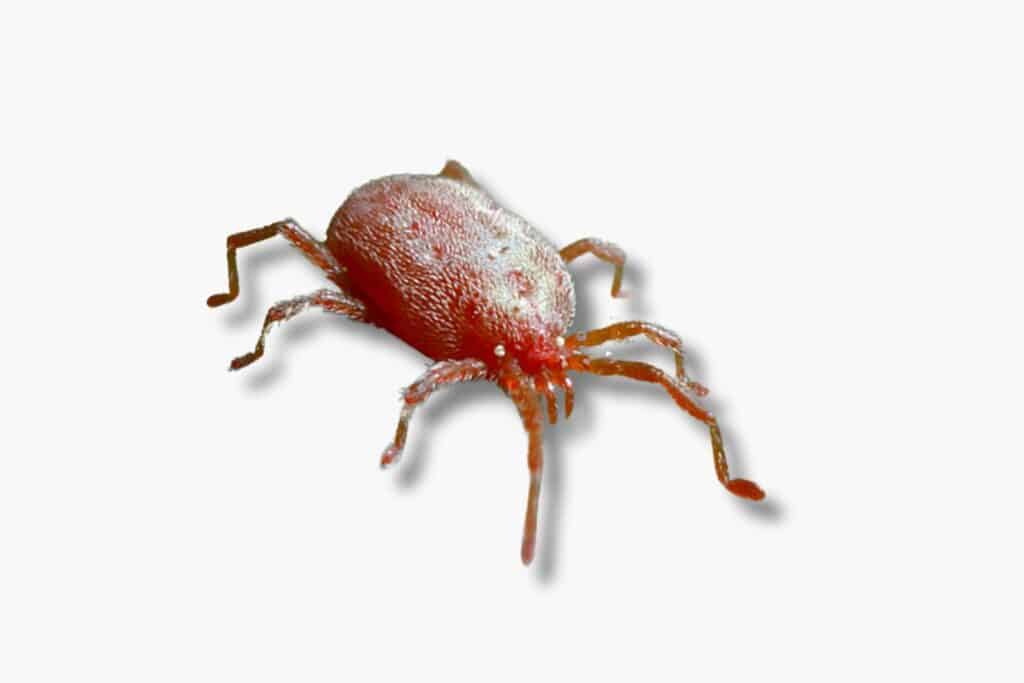
8. Black House Spiders
Black house spiders range from tiny to pretty big—they are dark-colored bugs commonly found in window frames, corners, or outdoor structures. While they may look intimidating, they are not aggressive and rarely bite.
However, their presence often means there’s a food source nearby—usually other insects. If you frequently spot these spiders indoors, it could be a sign that other bugs are getting inside as well.
- Where You’ll Find Them: Corners of rooms, windowsills, garages, and basements
- Should You Be Concerned? No—these spiders help control other pests, but frequent sightings could mean an insect issue inside the home.
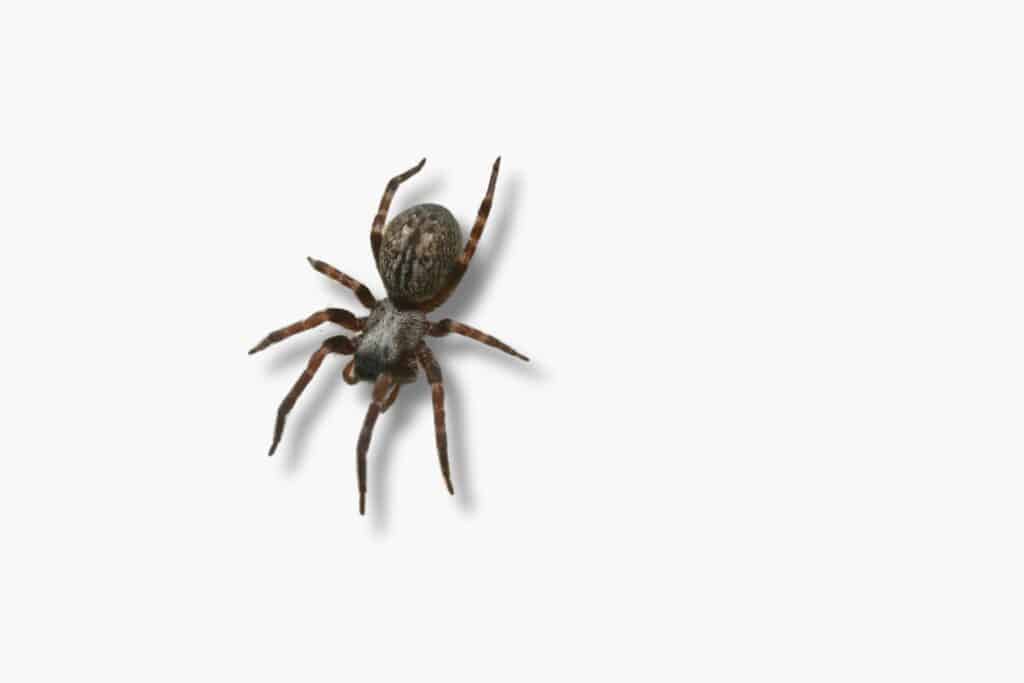
Places in Your Home to Check
Even the cleanest homes can have tiny black bugs hiding in unexpected places. Some sneak in through small openings, while others are drawn to food, moisture, or dark, undisturbed areas.
Knowing where to check can help you spot problems early.
- Cracks and gaps – Small bugs can squeeze through tiny openings around windows, doors, and foundations.
- Kitchens and pantries – Food sources attract ants, weevils, and other pantry pests.
- Sinks, drains, and bathrooms – Moisture-loving bugs like drain flies and cockroach nymphs thrive in damp areas.
- Carpets, furniture, and clothing storage – Carpet beetles often hide in fabrics, upholstery, and closets.
- Indoor plants – Fungus gnats lay eggs in damp soil, making potted plants a common trouble spot.
Regular inspections can help prevent a small problem from turning into a bigger infestation.
Preventing Tiny Black Bugs Indoors
Keeping bugs out is easier than getting rid of them once they’ve settled in. Since Florida’s climate naturally attracts pests, taking simple preventative measures can make a big difference.
- Close off small openings around windows, doors, and baseboards where bugs can sneak in.
- Use dehumidifiers, fix leaks, and improve ventilation in bathrooms and kitchens.
- Keep dry goods in airtight containers to prevent pantry pests like weevils.
- Rinse out sinks and drains to clear out organic buildup that attracts drain flies.
- Avoid overwatering and inspect soil for fungus gnat eggs.
- Remove potential food sources, larvae, and hidden bugs from carpets, furniture, and baseboards.
Other Good Pest Prevention Habits
Many household pests—including ants, roaches, and beetles—thrive in spaces that provide food, moisture, and shelter. Expanding your home maintenance routine can help reduce the chances of an infestation.
- Keep gutters and drainage systems clear – Clogged gutters create excess moisture and standing water.
- Manage yard debris and landscaping – Overgrown trees and shrubs can provide a bridge for pests to enter your home.
- Monitor attics, basements, and crawl spaces – These areas often go unchecked, making them ideal hiding spots for bugs and rodents.
- Check screens and vents – Torn window screens and unsealed attic or crawl space vents allow easy access for small insects.
- Declutter storage spaces – Piles of cardboard, fabric, or paper create shelter for pests. Store items in plastic bins with secure lids instead of cardboard boxes.
When to Call a Professional
While minor pest problems can often be managed with prevention and home maintenance, some infestations require expert treatment.
Professional pest control can help when:
- You continue to see bugs despite sealing entry points and following prevention steps.
- Ants, roaches, or pantry pests keep returning, even after cleaning and removing food sources.
- You suspect a hidden infestation but aren’t sure where it’s coming from.
- You want long-term pest control solutions tailored to your home’s specific needs.
A pest control specialist can identify the type of infestation, apply targeted treatments, and provide prevention strategies to keep your home bug-free.
Conclusion
Seeing tiny black bugs (or any pest) in the house can be frustrating, but knowing what you’re dealing with is the first step to keeping them under control.
While some pests are just a temporary annoyance, others can spread quickly or damage your home and belongings. If you notice signs of an infestation, or want to set up preventative service in Jacksonville or surrounding areas, call Inside & Out Pest Control today.
